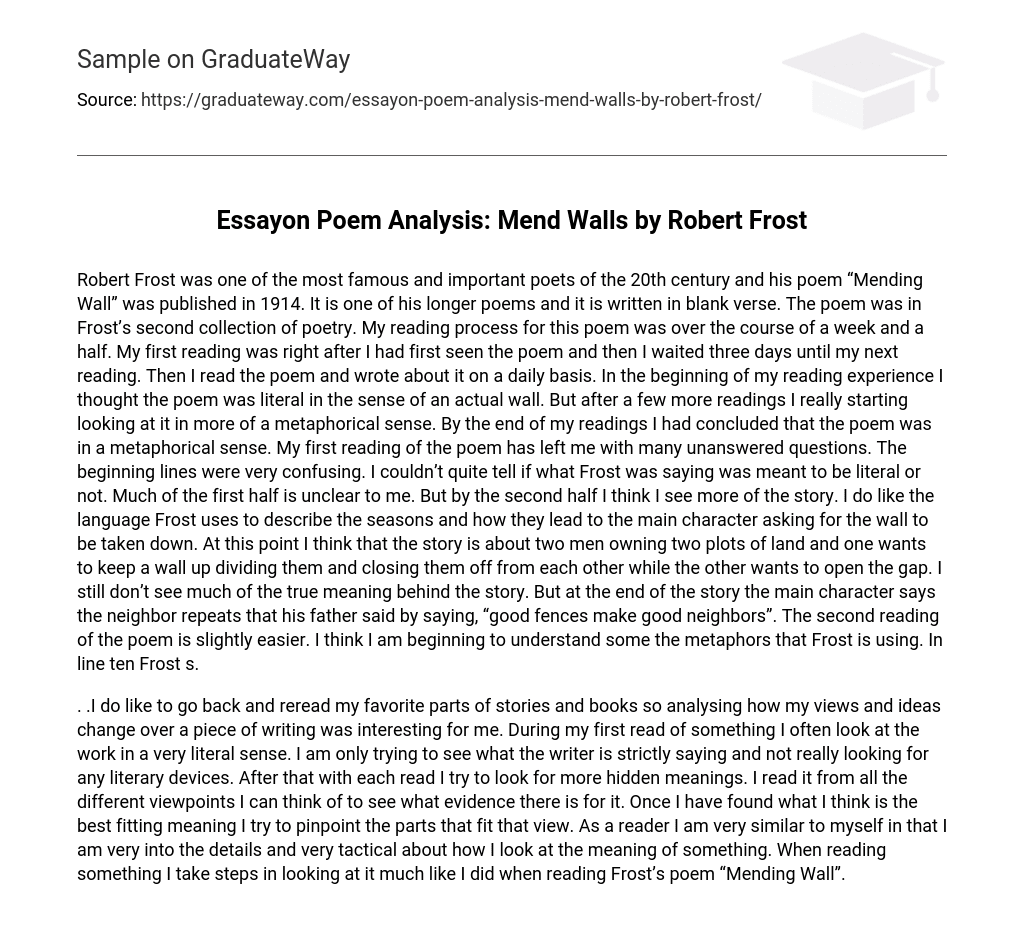Robert Frost, considered one of the most renowned poets of the 20th century, published his poem “Mending Wall” in 1914 as part of his second collection of poetry. The poem, written in blank verse, spans several stanzas. My personal reading process encompassed a week and a half, with multiple readings and reflections. Initially, I interpreted the poem literally, perceiving it as a depiction of an actual wall. However, after subsequent readings, I began to view it metaphorically. By the end of my analysis, I concluded that the poem operates on a metaphorical level. In my first reading, I encountered numerous unanswered questions, particularly with the perplexing opening lines. I struggled to decipher whether Frost intended them to be taken literally. The first half of the poem remained unclear to me, but as I progressed through the second half, a semblance of clarity emerged. I appreciated Frost’s use of language to illustrate the seasonal progression leading to the main character’s desire to dismantle the wall. At this point, I interpreted the narrative as depicting two individuals who own adjoining plots of land, with one desiring division and closure through the wall, while the other seeks openness and connection. However, I still find it challenging to grasp the deeper meaning behind the story.At the conclusion of the story, the protagonist echoes the words of his father, stating, “good fences make good neighbors,” which the neighbor also repeats. The second reading of the poem is somewhat simpler. I believe I am starting to grasp some of the metaphors employed by Frost. In line ten, Frost elucidates…
I enjoy going back and rereading my favorite parts of stories and books, so analyzing how my perspectives and thoughts change throughout a piece of writing was intriguing for me. Initially, when I read something, I tend to interpret it literally, focusing on the writer’s intended message rather than searching for any literary devices. However, with subsequent readings, I strive to uncover deeper connotations. I read it from various perspectives, examining the evidence for each one. Once I determine what I believe is the most fitting interpretation, I try to identify the specific sections that support that viewpoint. As a reader, I am quite meticulous and analytical in examining the meaning of something, much like when I read Frost’s poem “Mending Wall”.





